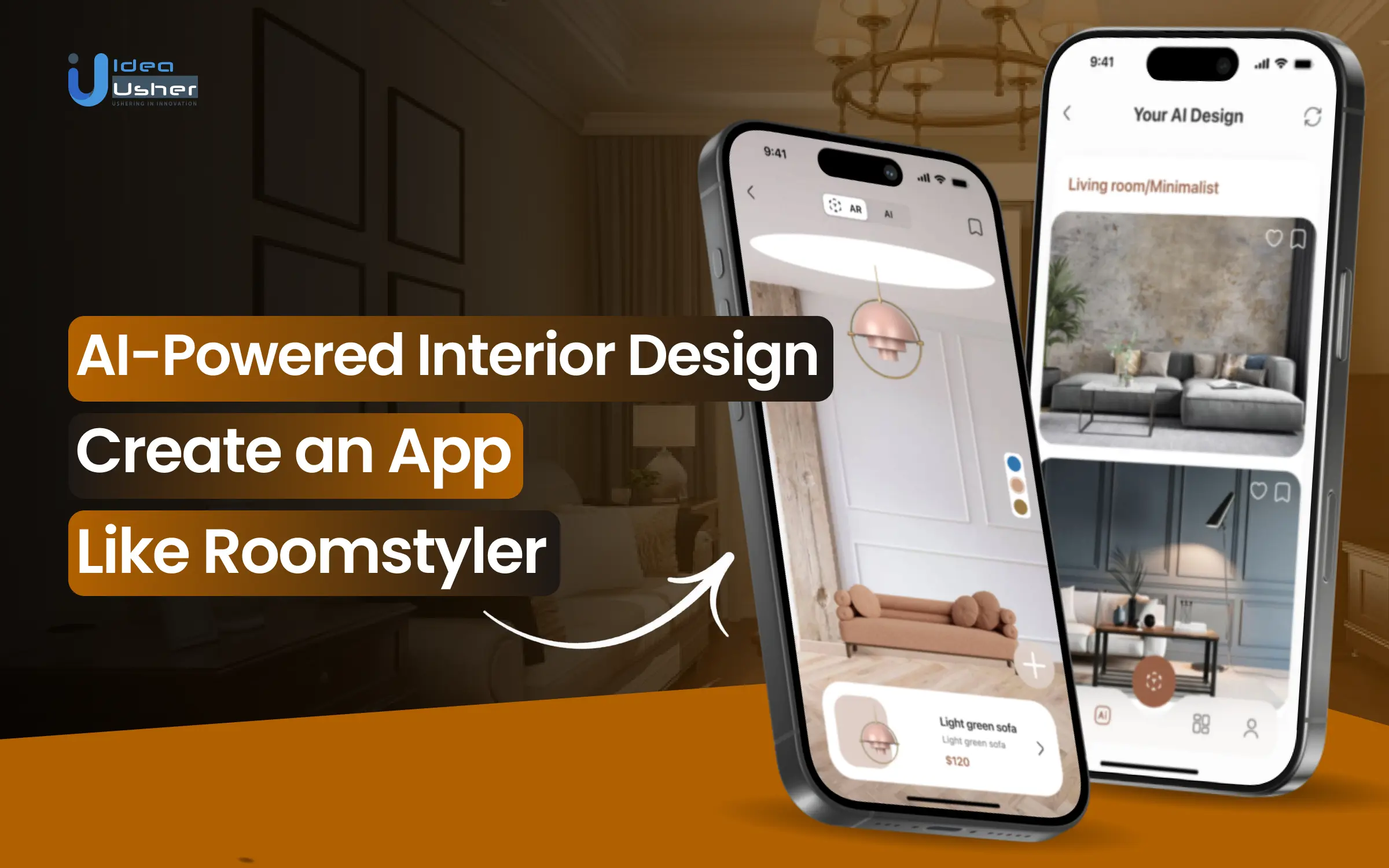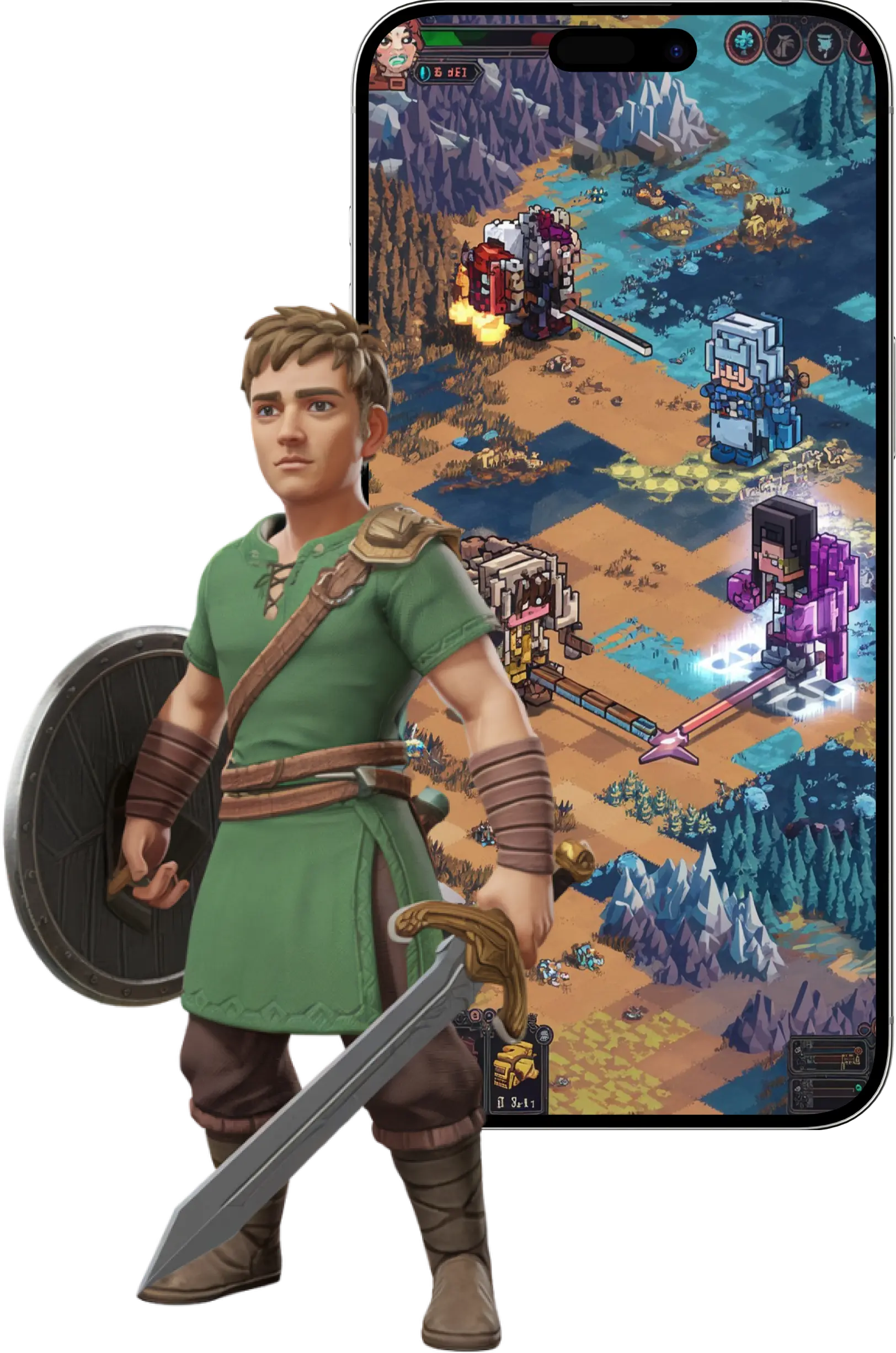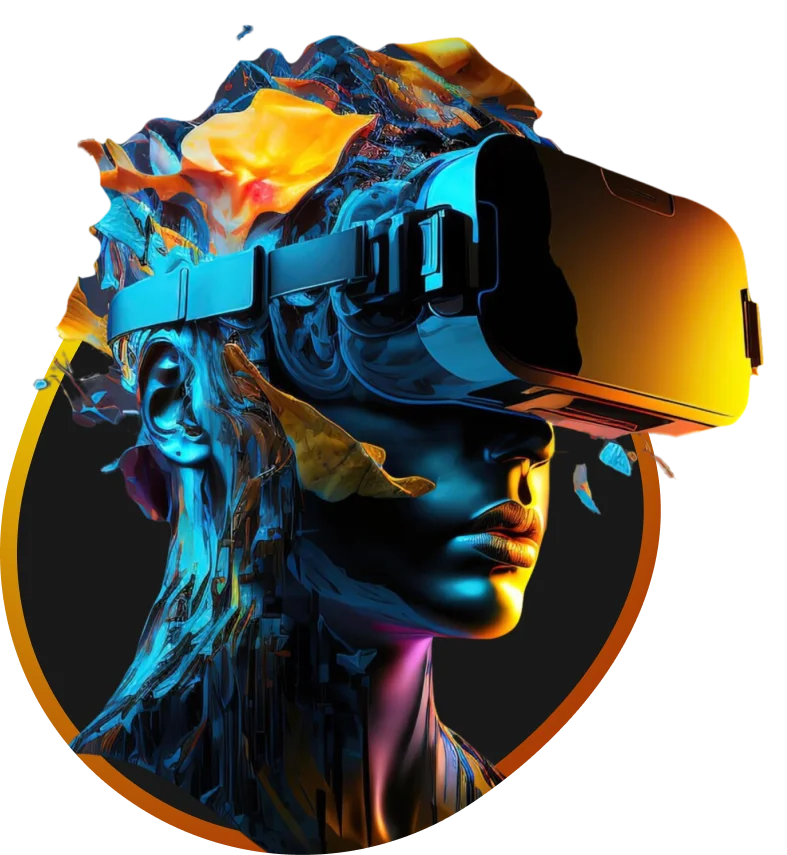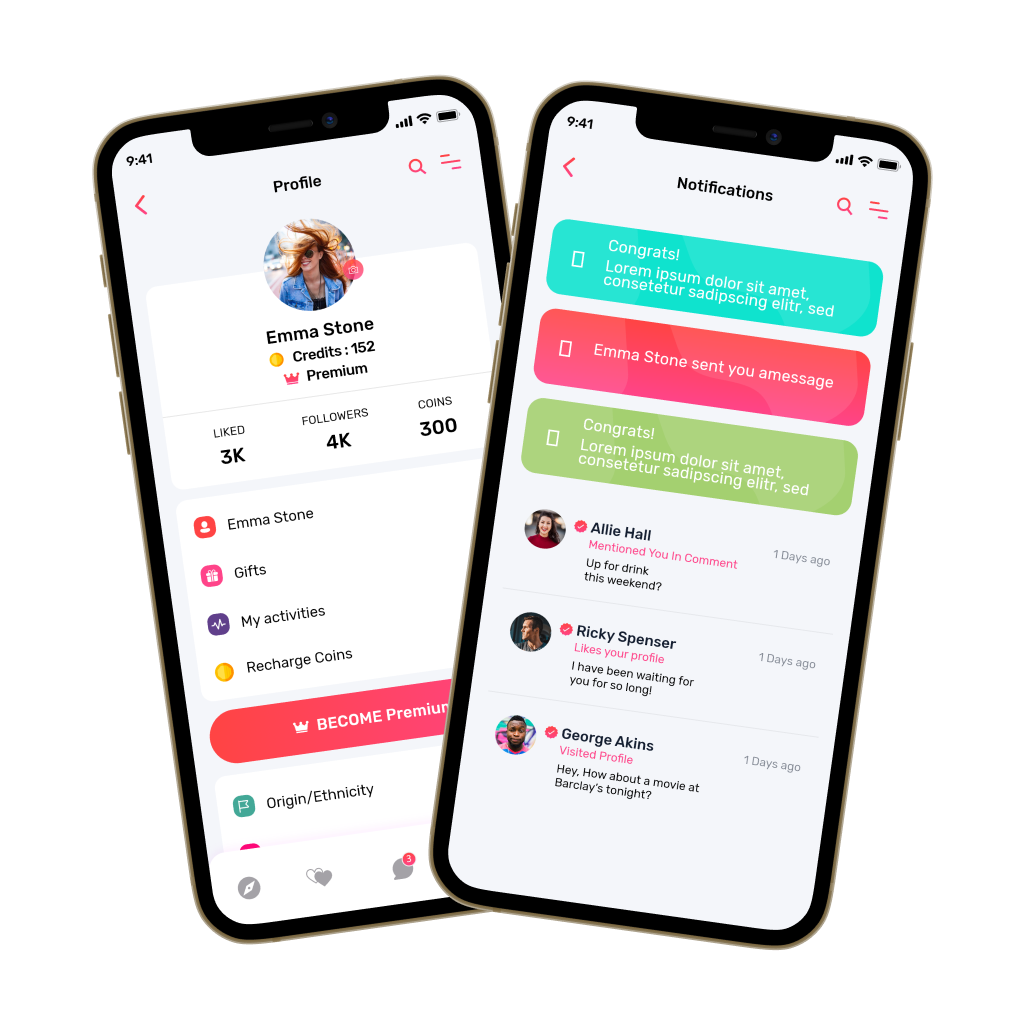Interior design has become more accessible and interactive than ever before, thanks to advancements in artificial intelligence and immersive technologies. AI-powered interior design development means what once required consultations, blueprints, and physical mockups can now be achieved through intelligent design platforms that bring spaces to life with just a few taps.
Apps like Roomstyler have set a new standard by allowing users to visualize, customize, and furnish rooms digitally. However, there is still significant opportunity for innovation. Whether it is personalized design recommendations, real-time augmented reality previews, or seamless integration with furniture retailers, AI continues to reshape how people approach home and office decor.
In this blog, we will explore how to build an AI-powered interior design app like Roomstyler. We will cover everything from current market trends and must-have features to the technology stack, development roadmap, and cost breakdown. Whether you are someone looking to develop an AI Interior Design app, this guide will help you understand the strategic and technical aspects of launching a competitive and engaging interior design platform.
Understanding the Market and Business Potential
The interior design landscape is rapidly evolving, driven by the integration of artificial intelligence and immersive technologies. As consumers seek faster, more personalized solutions to home design, AI-powered tools are becoming essential across residential and commercial spaces.
Market Trends in AI Interior Design
A Market.us report projects that the global AI in Interior Design market will grow from USD 829 million in 2023 to about USD 7,299 million by 2033, with a CAGR of 24.3% from 2024 to 2033. This growth indicates rising investment and consumer interest in AI-driven design platforms.
One of the most notable developments is the growing use of virtual staging and augmented or virtual reality in the real estate and home design industries. These technologies enable users to visualize furniture arrangements, color schemes, and spatial layouts within real environments, improving buyer confidence and accelerating decision-making.
Another major trend is the increasing demand for personalized home decor recommendations. Consumers expect solutions tailored to their preferences, lifestyle, and available space. AI makes this possible by analyzing user input, behavioral data, and design trends to offer customized suggestions that align with individual tastes.
Why Build an AI-Powered Interior Design App?
AI-powered interior design apps present a compelling value proposition for both users and businesses. These platforms naturally encourage high user engagement, particularly when integrated with social media features. Users can create, share, and explore design inspiration, which contributes to organic growth and community interaction.
From a business perspective, there are numerous monetization opportunities. These include subscription models offering advanced design capabilities, exclusive content, or premium support. Additionally, partnerships with furniture and decor brands can create affiliate revenue streams, enabling in-app product discovery and seamless shopping experiences.
Building an AI interior design app allows businesses to meet growing consumer expectations, tap into the personalized design market, and generate sustainable revenue through innovative and scalable technology.
Key Features of an AI Interior Design App
To deliver value and stand out in a competitive market, an AI-powered interior design app should include a set of essential features for its Minimum Viable Product (MVP), with the option to expand into more advanced capabilities as the platform matures.
Core Features
- AI-Powered Room Planning: Automatically suggests furniture layouts, space utilization options, and flow optimization based on room dimensions and user preferences.
- Augmented Reality Preview: Allows users to view furniture and decor in their actual space using real-time camera overlays, enhancing visualization and purchase confidence.
- 3D Modeling and Rendering: Generates photorealistic designs to help users understand how each element will look and fit together in a room.
- Furniture and Decor Catalog: Provides access to a curated collection of products with brand integrations and e-commerce links for direct purchases.
- Style Recommendations: Uses AI to suggest themes, palettes, and furnishings based on user behavior, previous selections, and visual preferences.
Advanced Features
- Voice and Gesture Controls: Enable users to make adjustments without touch input, adding accessibility and convenience to the design experience.
- Social Sharing and Community Boards: Allows users to share their designs, get feedback, and find inspiration from a larger community.
- AI Color and Texture Generator: Creates custom wallpapers, textiles, and material finishes that match the user’s aesthetic.
- Virtual Reality Walkthroughs: Offers immersive experiences where users can explore their designed spaces in a fully virtual environment, enhancing emotional connection and decision-making confidence.
How AI and Machine Learning Power Interior Design Apps
AI and machine learning are the core enablers behind intelligent interior design applications. These technologies make it possible to analyze spaces, generate design ideas, and deliver deeply personalized user experiences. Below are the key technical components that power modern AI design apps.
1. Computer Vision for Room Scanning
Computer vision techniques are used to scan and interpret physical environments. Through object detection and spatial mapping, the system can identify furniture, room dimensions, wall boundaries, and lighting conditions. This allows the app to create accurate digital replicas of real spaces.
2. Generative AI for Design Suggestions
Generative models such as Generative Adversarial Networks (GANs) and style transfer algorithms are employed to produce visual design ideas. These models can generate new decor combinations, room styles, or layout variations based on user preferences or trending aesthetics.
3. Recommendation Engines
Recommendation systems leverage collaborative filtering, natural language processing, and behavioral analytics to offer relevant decor and furniture suggestions. These engines learn from user actions and feedback, enabling continuous personalization.
4. AR Core and ARKit for Real-Time Overlays
Using AR frameworks such as Google ARCore and Apple’s ARKit, apps can render design elements into the physical environment through a mobile device. This real-time overlay enhances user visualization and helps in making faster decisions.
5. Cloud-Based Rendering
To manage the computational load of photorealistic rendering and data-heavy processes, cloud infrastructure is used. Cloud-based rendering improves performance, scalability, and response time, ensuring a smooth and responsive design experience for users across devices.
Step-by-Step Process to Build an AI Interior Design App
This section outlines the essential stages involved in transforming your interior design app idea into a fully functional, AI-powered digital solution. From market research to post-launch scaling, each step plays a vital role in ensuring a successful and scalable product.
Step 1: Consult & Market Research
Before development, understand your target market and what will make your application unique. Determine if your audience is homeowners, real estate professionals, or designers, and decide if you’ll focus on direct-to-consumer solutions or business partnerships. Analyze platforms like Roomstyler, Houzz, and IKEA Place to find market gaps. For a strong foundation, consult a reputed company like IdeaUsher to refine your strategy, technology stack, and features. Define your unique value proposition, such as AI-generated designs based on users’ social media or instant 3D renders with shopping options.
Step 2: Planning Features & User Experience
A well-planned user experience is critical to engagement and retention. Begin by selecting core features such as AI-based room scanning, drag-and-drop furniture placement, augmented or virtual reality visualization, and a furniture catalog with partner brand integrations. Include AI-generated style recommendations as part of your minimum viable product. For future updates, plan enhancements such as voice-controlled design, user-generated content sharing, and AI-generated custom furniture.
Step 3: UI & UX Design
Designing an intuitive and appealing interface is essential to user adoption. Begin with wireframes using tools such as Figma or Adobe XD. Proceed to interactive prototypes and finalize a visually engaging interface. Key interface elements should include simple layout editors, real-time preview options, and seamless navigation for browsing and purchasing.
Step 4: Frontend & Backend Development
For the front end, mobile apps can be developed using React Native for cross-platform compatibility or Swift and Kotlin for native iOS and Android experiences. These frameworks support responsive user interfaces and seamless real-time interactions. For the web version, React.js or Angular can be used to create an intuitive browser-based design platform.
On the backend, frameworks such as Node.js or Python (using Django or Flask) are recommended to handle core functionalities, data exchange, and user authentication. Firebase can be used for scalable, real-time database needs, while PostgreSQL supports structured data storage and complex queries. Together, these technologies form the backbone of a reliable and high-performance application.
Step 5: AI Development
The intelligence of your design app depends on robust AI implementation. Begin by integrating AI libraries such as TensorFlow for machine learning workflows and OpenAI’s CLIP for understanding style and context in user inputs. For computer vision tasks like room detection and spatial mapping, tools such as OpenCV and Google’s MediaPipe are highly effective.
To ensure meaningful personalization, your AI models should be trained on diverse datasets that include furniture types, interior styles, room layouts, and user behavior patterns, enabling the system to deliver accurate recommendations that align with both aesthetic preferences and spatial practicality.
Step 6: AI Model Training & Data Collection
Robust AI requires clean, relevant data. Collect datasets covering room types, furniture styles, and color schemes. These can be sourced from open databases, partnerships with furniture brands, or ethically conducted web scraping. Train models for style recognition, space optimization and refine them through beta testing with real designers to ensure practical accuracy.
To achieve consistent performance across diverse user needs, ensure that your dataset represents a wide range of room dimensions, cultural aesthetics, and furniture arrangements, allowing the AI to generalize effectively across different design scenarios.
Step 7: Development & Integration
This phase is where the complete architecture of your AI-powered interior design app comes to life. It requires close collaboration between front-end developers, backend engineers, AI specialists, and 3D rendering experts to ensure a cohesive, functional product.
Key tasks in this phase include:
- Frontend Development: Developers build the user-facing interface of the app, ensuring it is intuitive, responsive, and visually engaging. This includes screens for room planning, product browsing, AR previews, and design sharing.
- Back-end development: Engineers handle server-side development, including the setup of databases, user authentication, API endpoints, and integration logic. This layer ensures that data is stored, retrieved, and processed efficiently and securely.
- AI Model Integration: AI engineers integrate the trained models into the application. These models handle tasks such as room layout recognition, design recommendations, and style detection. The models must be optimized for speed and accuracy to support real-time use.
- 3D Rendering Engine Setup: 3D specialists configure rendering tools such as Unity, Unreal Engine, or Three.js to display interactive and photorealistic room designs. This is essential for offering immersive previews and user-controlled customization.
- E-commerce and Affiliate Integration: Include payment gateways, product catalog links, and affiliate systems to support in-app furniture purchases. This not only enhances the user experience but also creates monetization opportunities through partnerships with furniture brands.
At this stage, developers must ensure the integration of components, test all endpoints thoroughly, and streamline the transition from user actions to backend processing and output. This step is essential for the application’s functionality and impacts user satisfaction and commercial success.
Step 8: Testing
Conduct thorough testing to ensure reliability. Perform functional testing to confirm accurate room recognition and responsive interactions. Validate performance across various devices for smooth augmented or virtual reality features. Gather feedback through user testing to identify areas for improvement. Comprehensive quality assurance also includes stress testing, security validation, and usability checks to ensure the app performs consistently under real-world conditions and meets user expectations before launch.
Step 9: Launch & Marketing Strategy
Once the application is stable, develop a marketing plan. Optimize for app stores using keywords such as AI interior design. Collaborate with influencers and interior designers to generate awareness. Promote through targeted advertisements on social media channels where home decor and design are trending.
Work with Ex-MAANG developers to build next-gen apps schedule your consultation now
Cost of Development
Building an AI-powered interior design app involves multiple stages, each contributing to the overall budget. Below is a cost breakdown that outlines key development steps, associated tasks, brief descriptions, and estimated cost ranges to help guide investment planning.
| Development Step | Task Description | Estimated Cost |
| Market Research and USP | Identify audience, analyze competitors, define USP | $1,500 – $3,000 |
| Feature Planning and UX Design | Define features, create user flows and wireframes | $3,000 – $7,000 |
| Technology Stack Setup | Select and configure tools, frameworks, databases | $2,000 – $6,000 |
| AI Model Training and Data Prep | Collect datasets, train and test AI models | $5,000 – $15,000 |
| UI/UX Design | Create UI mockups and interactive prototypes | $4,000 – $8,000 |
| App Development and Integration | Frontend, backend, AI, and 3D integration | $20,000 – $40,000 |
| Testing and Quality Assurance | Conduct testing for functionality and performance | $3,000 – $6,000 |
| Launch and Marketing | ASO, influencer campaigns, paid ads | $5,000 – $10,000 |
| Post-Launch Support and Scaling | Updates, monetization features, enterprise offers | $6,000 – $15,000 |
This is a rough estimated cost range. Final pricing may vary based on specific project requirements, team size, technology stack, and regulatory considerations.
Future of the AI Interior Design App
As technology continues to evolve, AI interior design apps will become more immersive, intuitive, and customizable. The future promises a seamless blend of real-world design functionality and virtual innovation, redefining how users experience and shape their spaces.
1. AI-Generated Custom Furniture
One of the most promising developments in AI-powered interior design is the emergence of custom furniture generation. By combining AI algorithms with on-demand 3D printing technologies, users can design and manufacture furniture tailored to their individual space, style, and functional needs. This reduces the dependency on mass-produced pieces and allows for greater creativity and personalization in home design.
2. Metaverse Integration
As virtual reality environments and blockchain technologies continue to grow, interior design is expected to have a meaningful presence in the metaverse. Users will not only design their physical spaces but also curate virtual homes and offices using digital assets. These environments can be tokenized, traded, or showcased, offering new opportunities for designers, brands, and property developers to monetize digital experiences.
3. Voice-Activated Design Assistants
Another exciting advancement is the rise of voice-enabled interior design. These intelligent assistants will allow users to interact with their apps using simple, conversational language. Commands like “Redesign my bedroom for a modern look” or “Change the sofa to navy blue” will initiate automated design suggestions powered by real-time AI analysis. This technology improves accessibility and convenience while speeding up the design process.
Conclusion
The interior design industry is evolving rapidly, and AI is at the center of this transformation. Building an app like Roomstyler, enhanced with intelligent features such as real-time visualization, personalized suggestions, and seamless e-commerce integration, offers both creative opportunity and strong business potential. With the right strategy, technology stack, and execution plan, entrepreneurs can deliver a solution that meets the growing demand for accessible and personalized design experiences. As user expectations continue to rise, investing in an AI-powered interior design app is not just a trend but a forward-thinking move toward sustainable innovation in the digital design space.
Build an AI-powered Interior Design App with IdeaUsher!
At IdeaUsher, we specialize in building intelligent, scalable, and visually stunning AI-powered interior design applications. Our team of experienced ex-FAANG/MAANG engineers delivers end-to-end development solutions that combine design creativity with advanced technology.
We integrate powerful features such as real-time 3D room visualization, AI-driven style recommendations, virtual staging, and seamless e-commerce integrations. By leveraging computer vision, generative AI, and AR/VR technologies, we create immersive platforms that transform how users design and experience their spaces.
Our solutions are compatible with leading technologies and platforms, ensuring integration with brand catalogs, user personalization engines, and mobile-first interactions. Whether you are a startup entering the design tech space or an established business expanding digitally, we help you bring your product to life with precision and innovation.
Partner with IdeaUsher to create your own version of an AI interior design platform enhanced with smarter features, scalable architecture, and a design-first user experience.
Explore our portfolio to discover how we have helped other enterprises innovate through AI-powered digital solutions.
Work with Ex-MAANG developers to build next-gen apps schedule your consultation now
FAQs
1. Can I take a picture of a room and design it using the AI interior design app?
Yes, the app can analyze a room photo using computer vision to detect dimensions, furniture, and layout, allowing you to redesign the space digitally with AI-generated suggestions. It provides an interactive interface where you can visualize changes in real time and experiment with different styles and furnishings.
2. Can AI design a room layout?
Yes, AI can generate optimized room layouts by analyzing space dimensions, user preferences, and functional requirements, offering intelligent recommendations for furniture placement and design styles. The system continuously learns from user feedback and trends to improve layout suggestions and deliver more personalized experiences.
3. What are the essential features to include in an AI-powered interior design app?
An AI-powered interior design app should offer features such as 3D room planning, virtual staging, AI-driven style recommendations, augmented reality (AR) previews, and a comprehensive furniture and decor catalog. These functionalities enhance user engagement by providing interactive and personalized design experiences.
4. How can an AI-powered interior design app integrate with e-commerce platforms?
The app can integrate with e-commerce platforms by embedding direct links to furniture and decor items within the design interface, enabling users to purchase products seamlessly. Additionally, partnerships with furniture brands can facilitate real-time inventory updates and personalized product recommendations, enhancing the overall shopping experience.






















